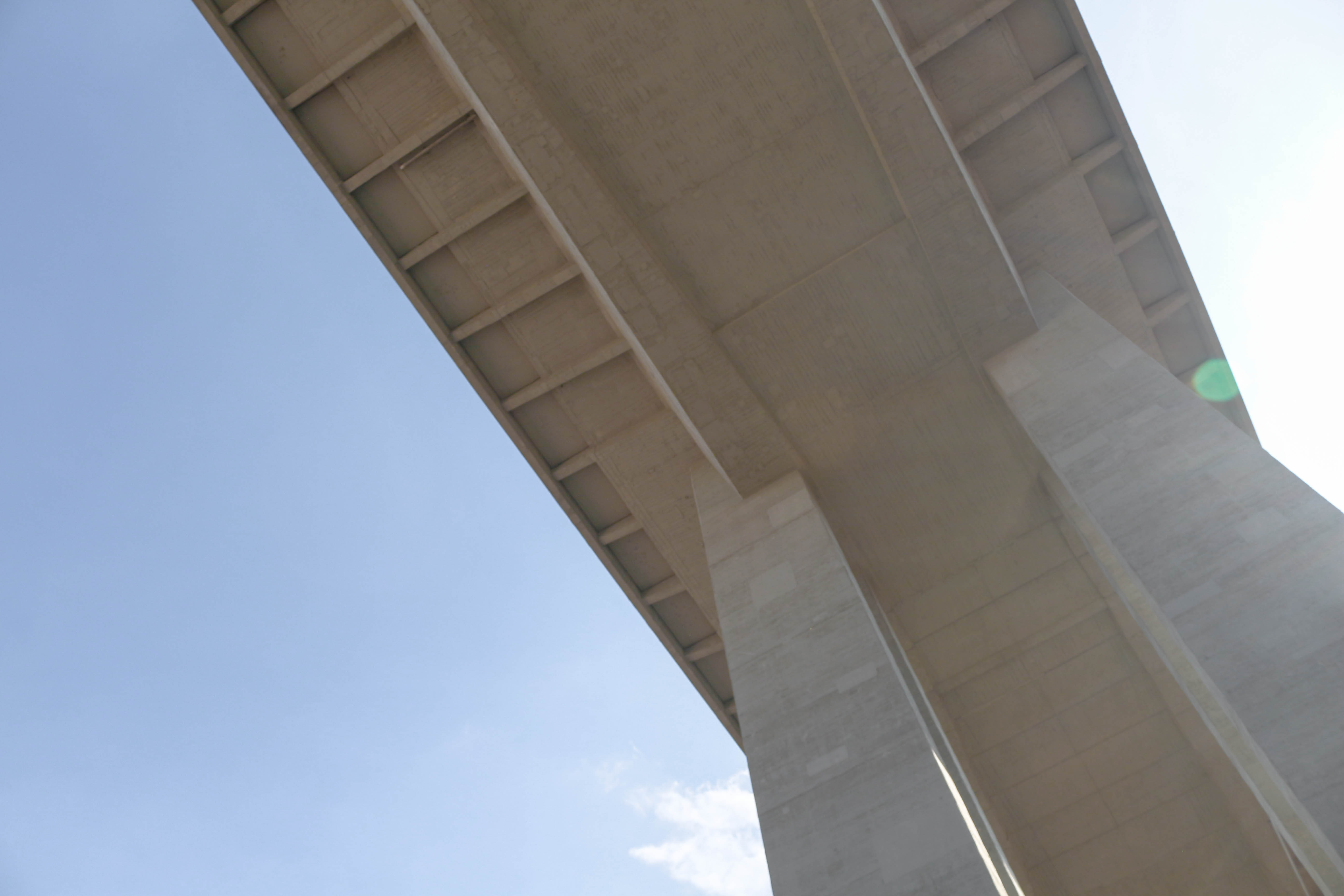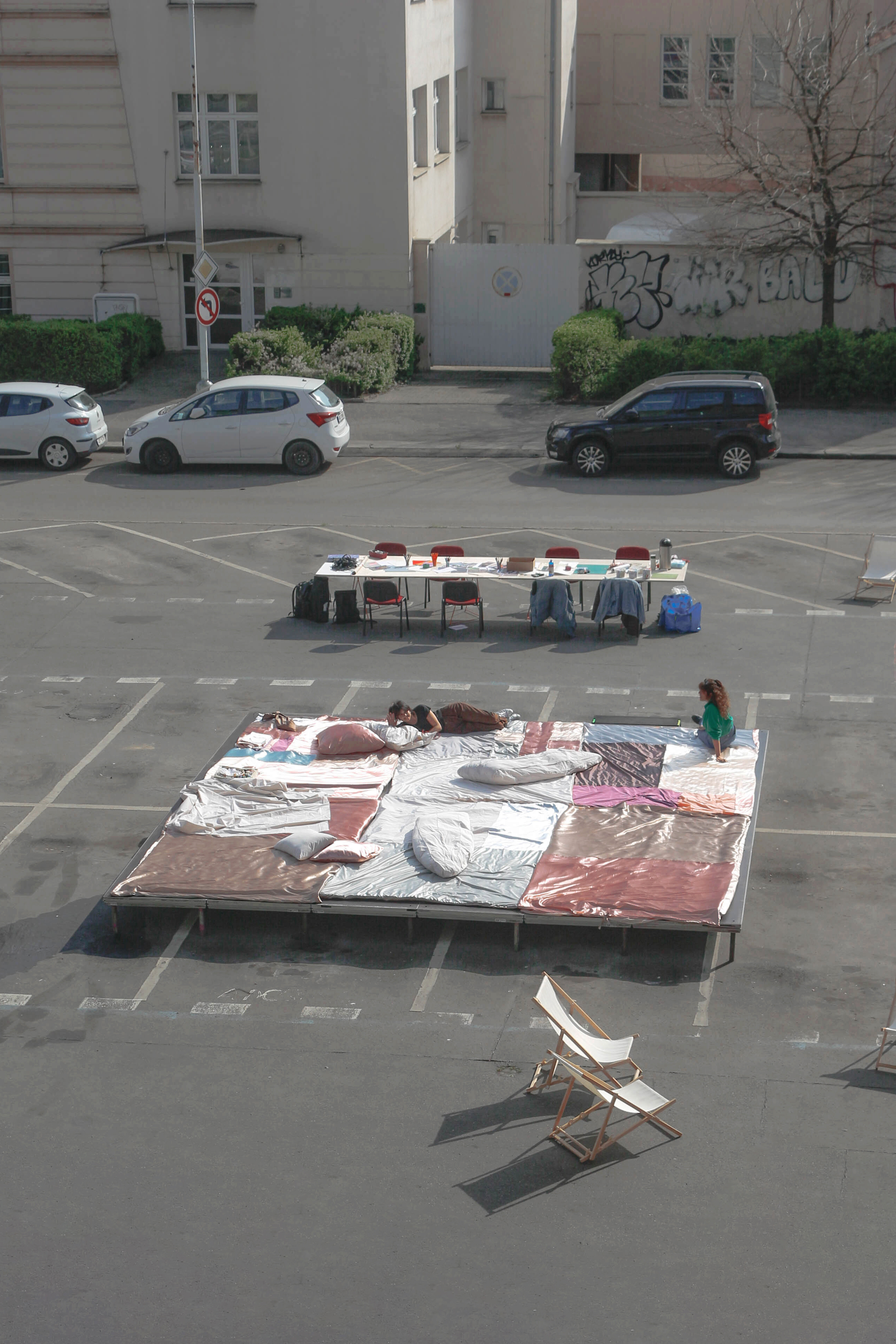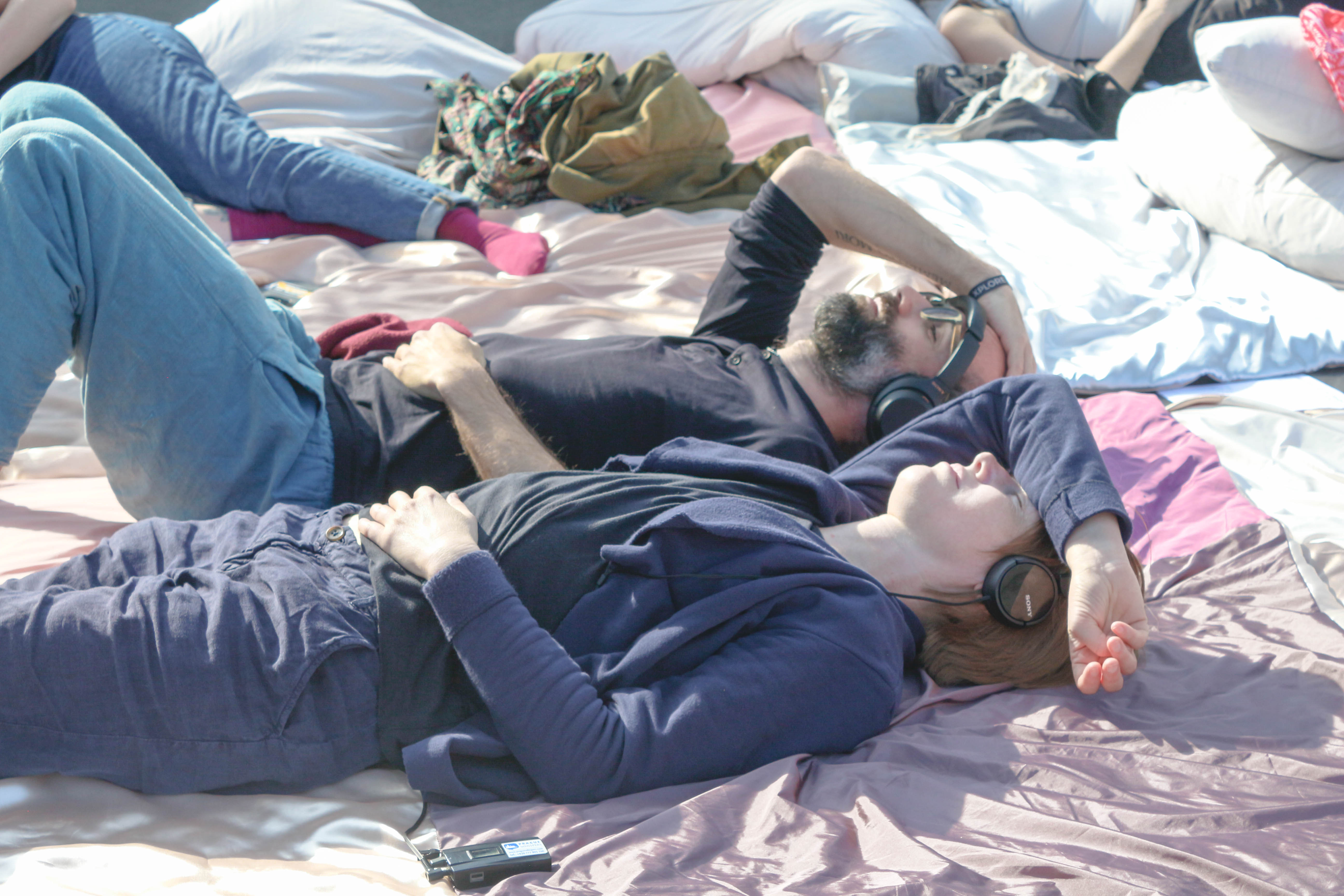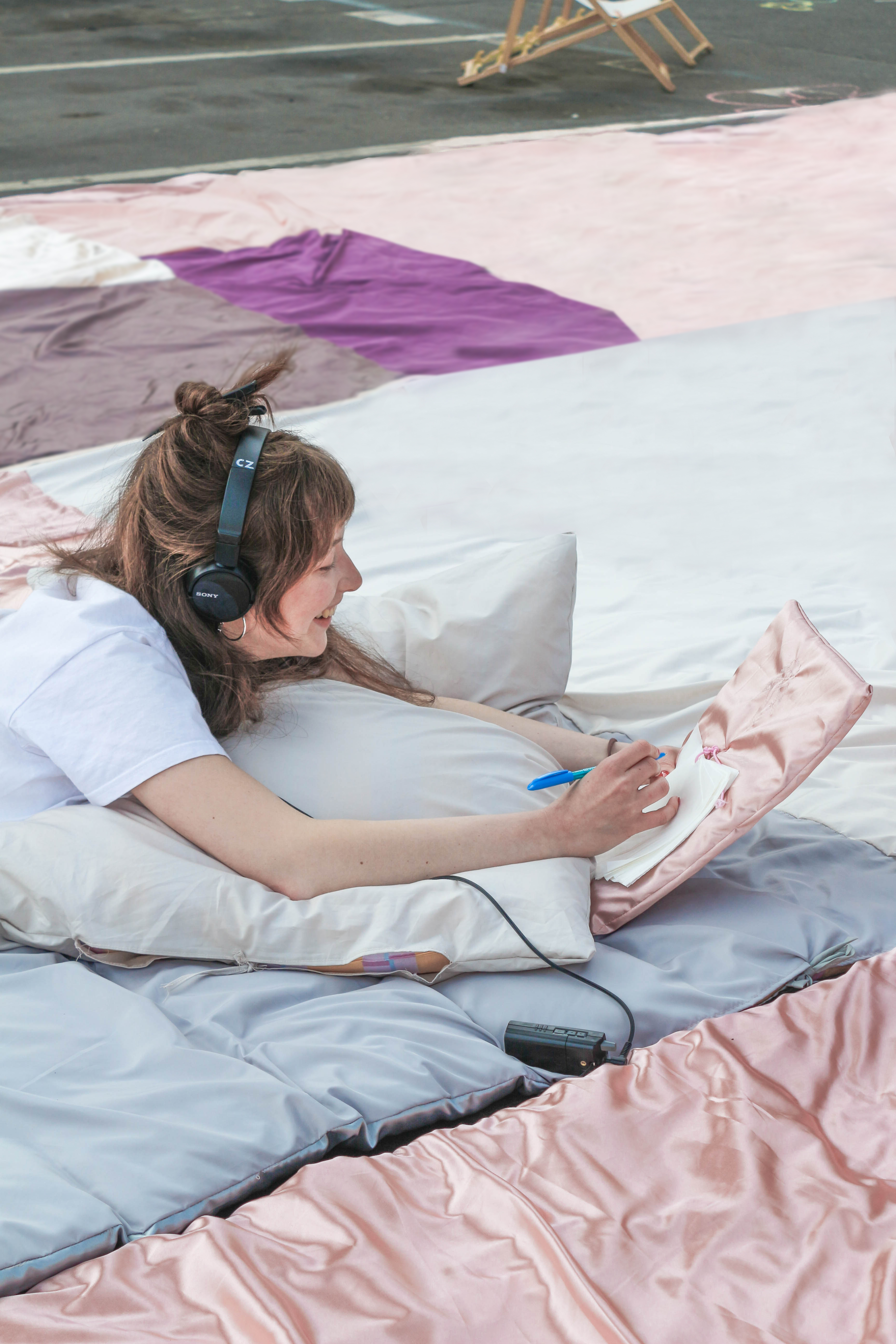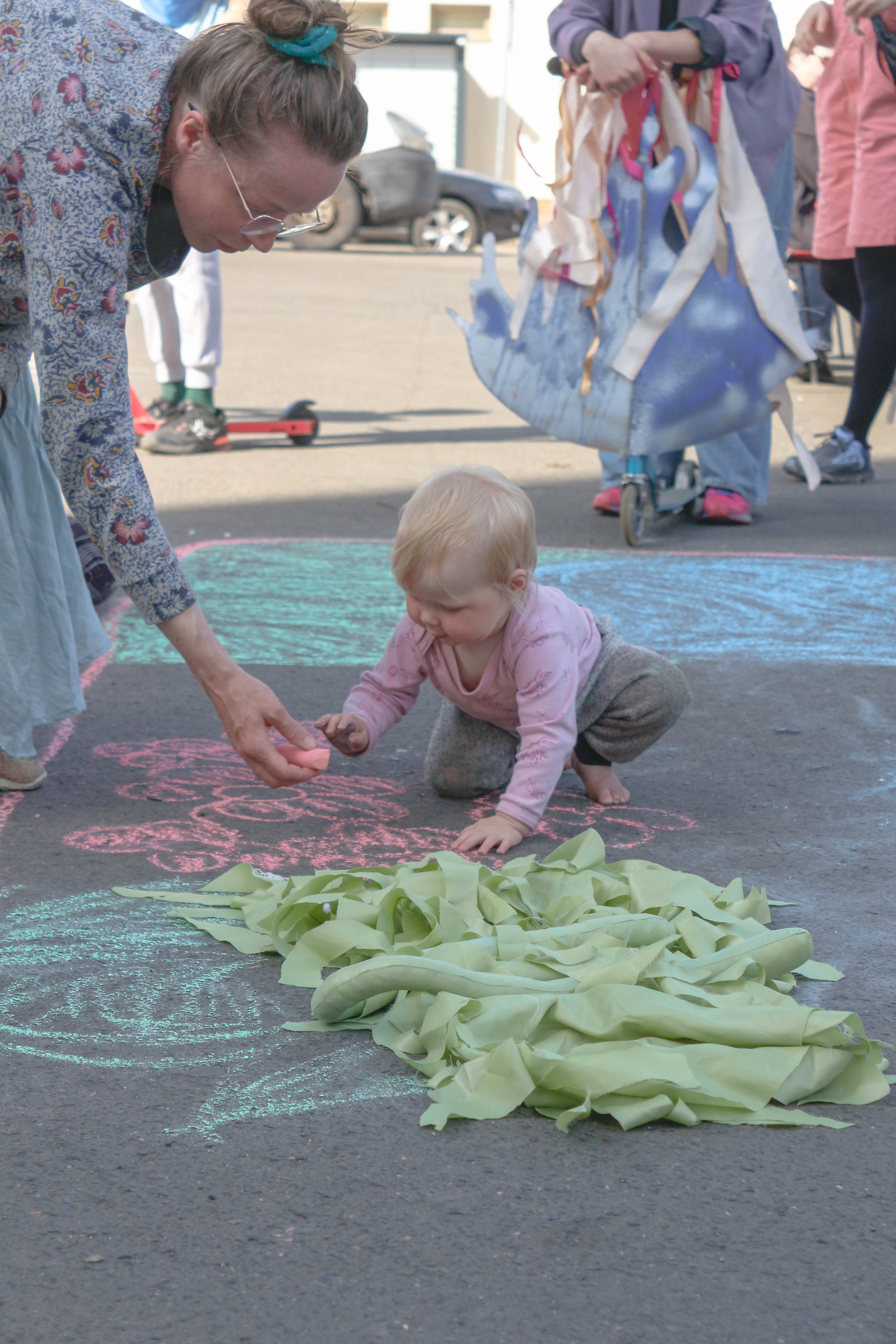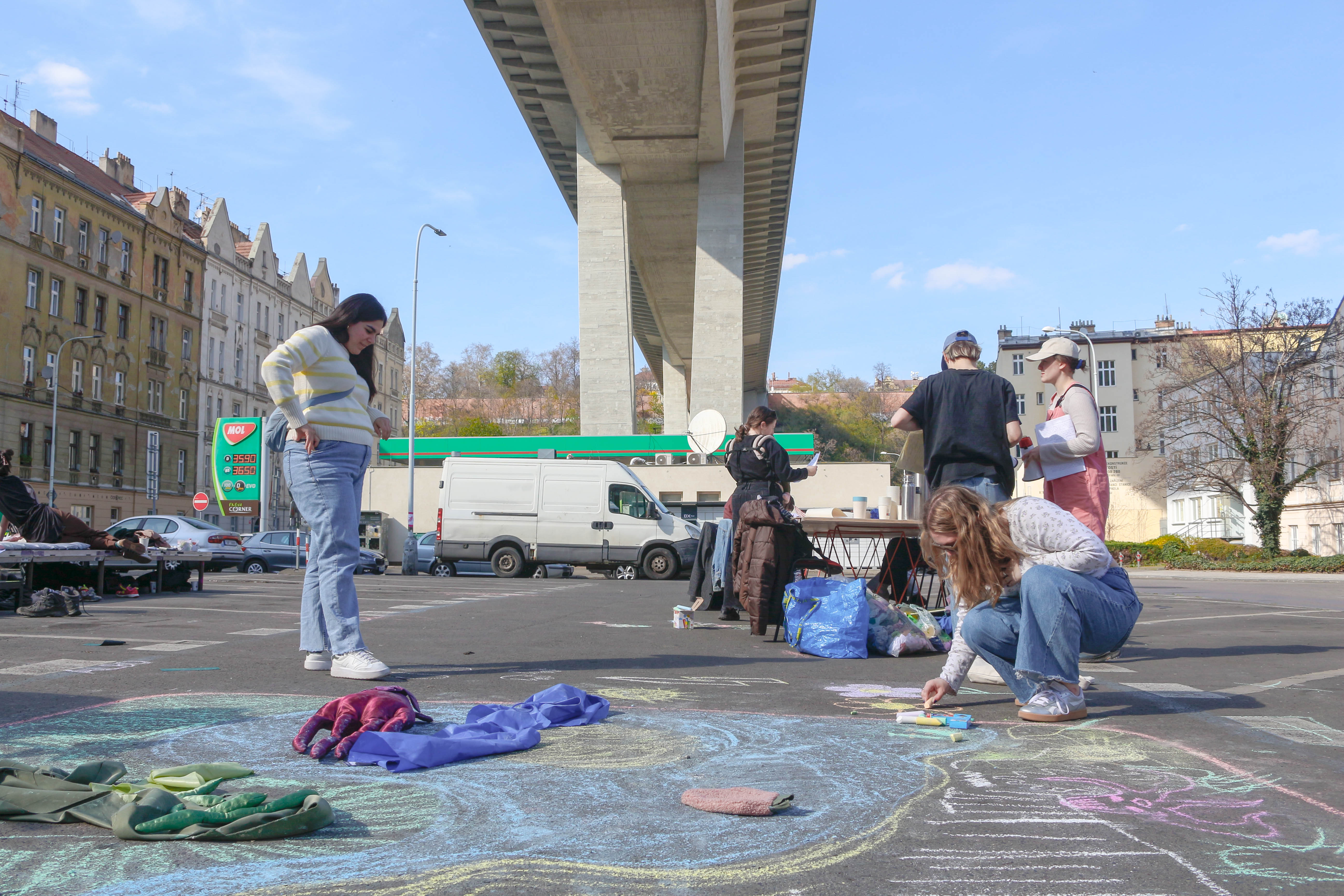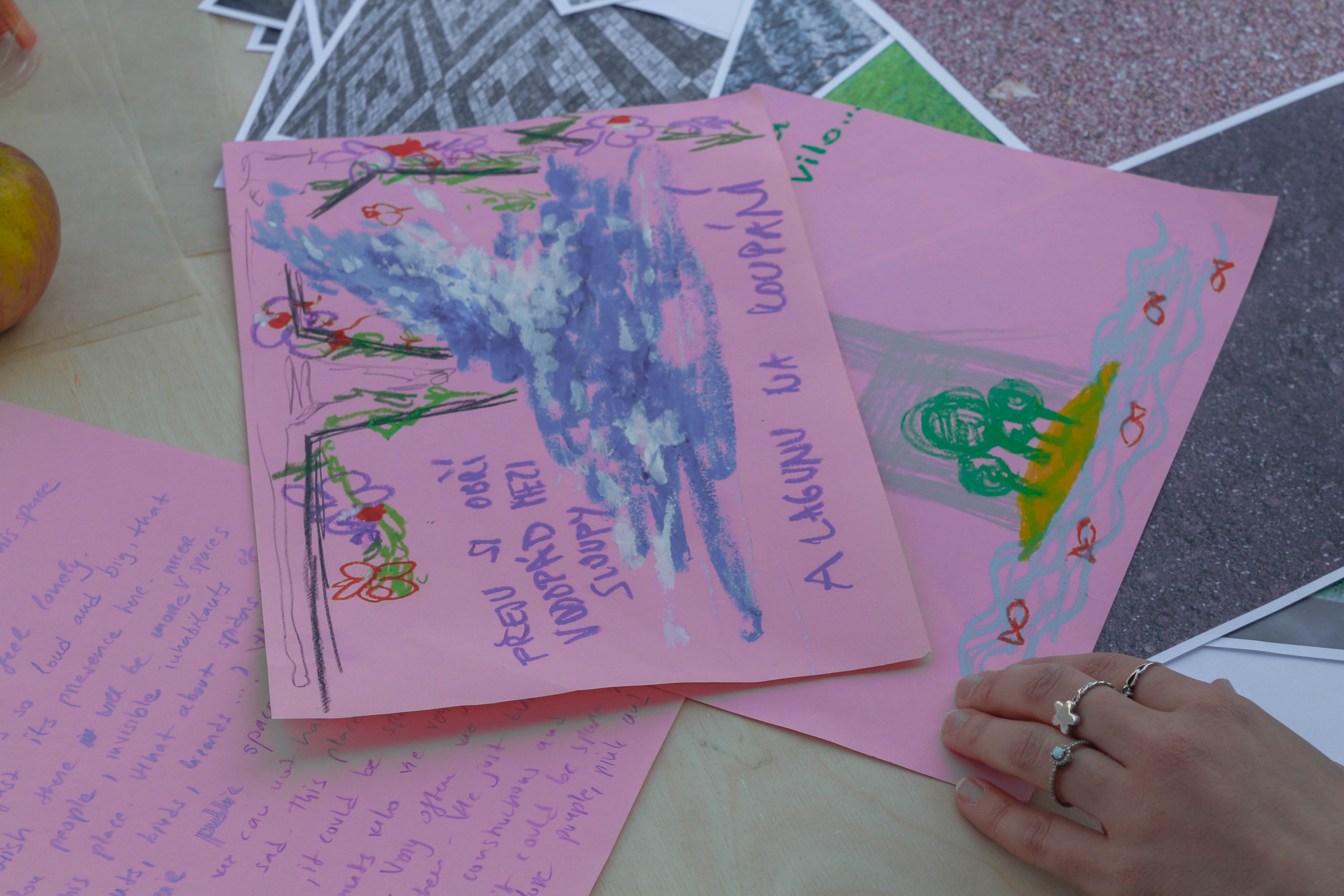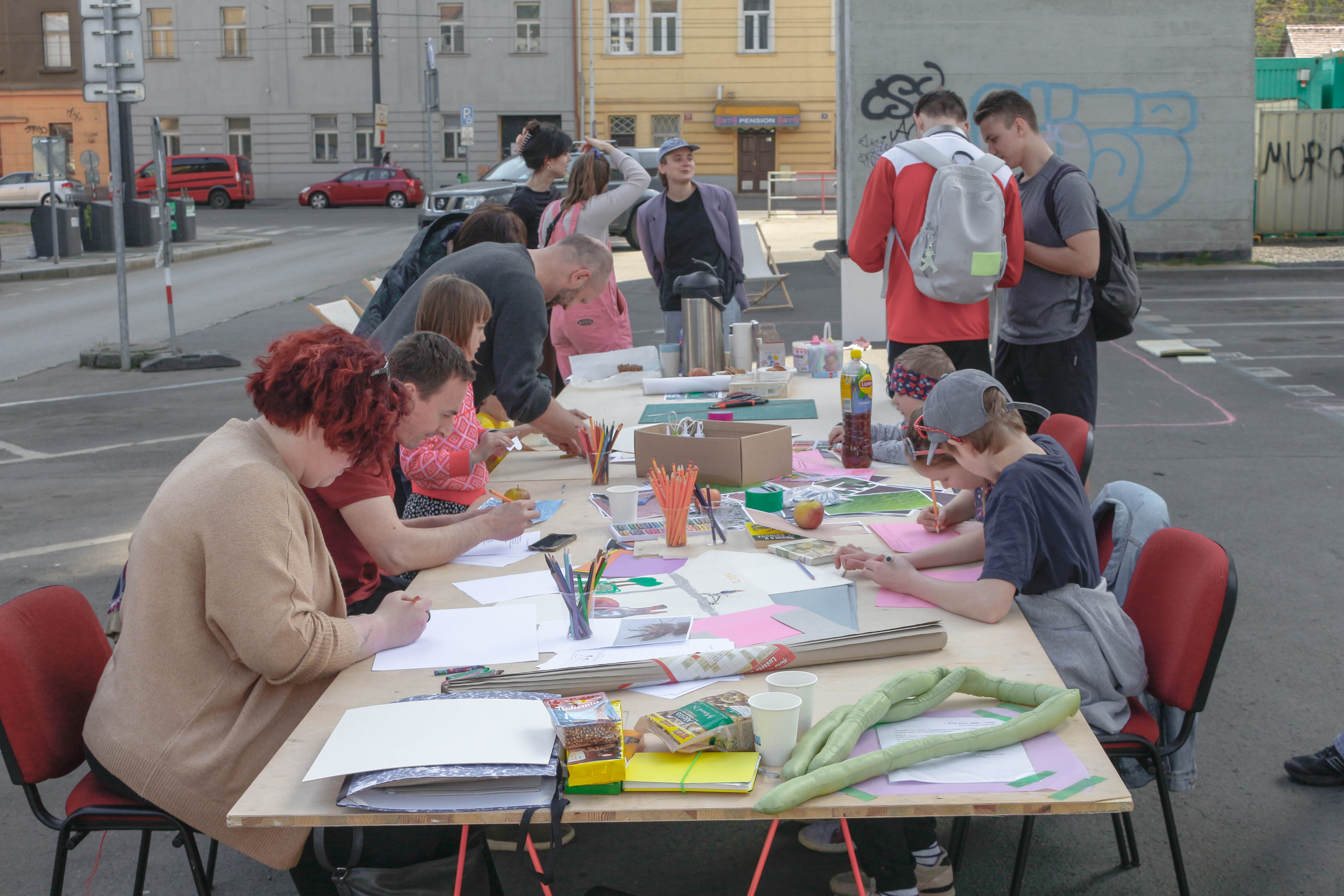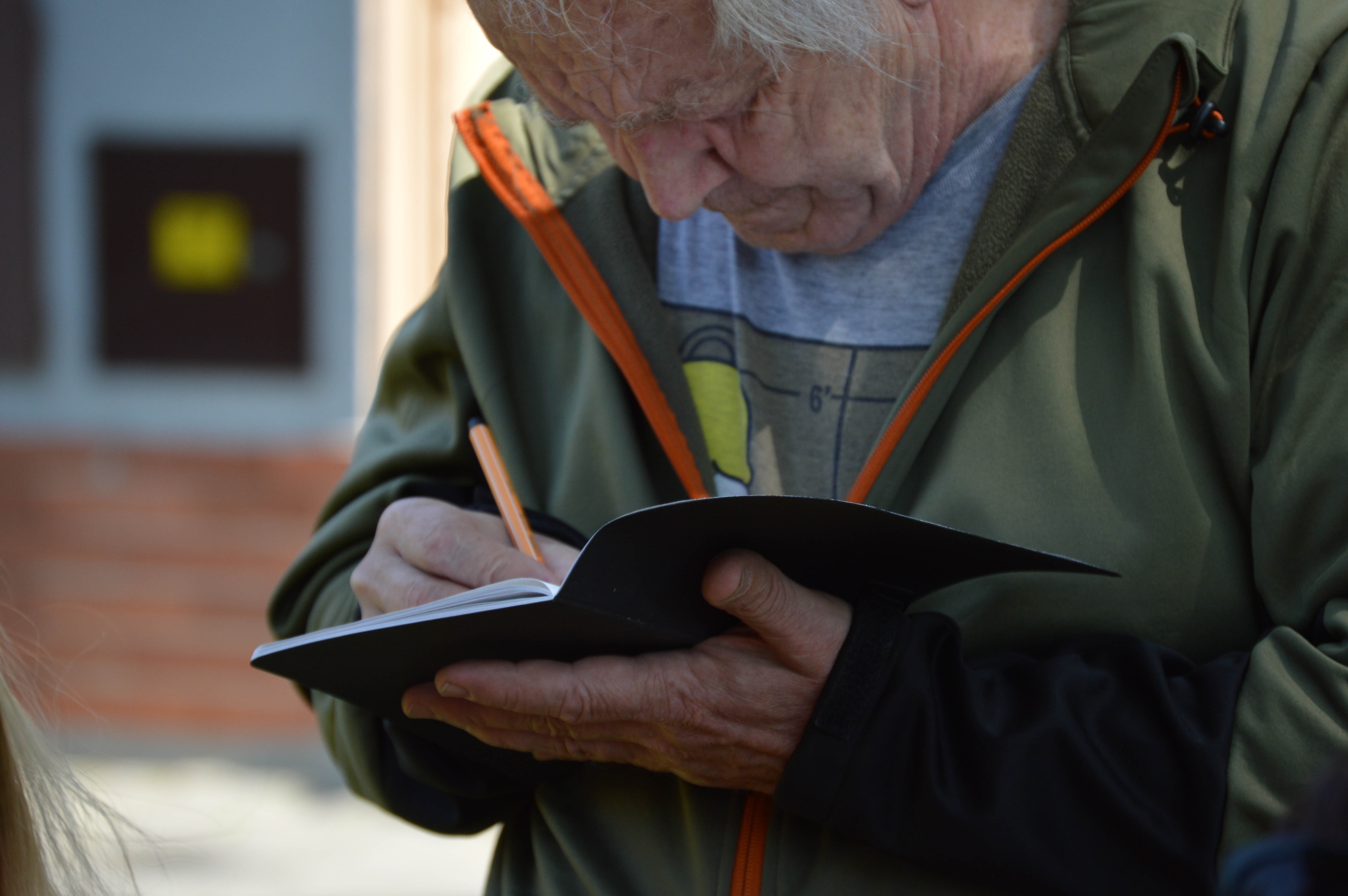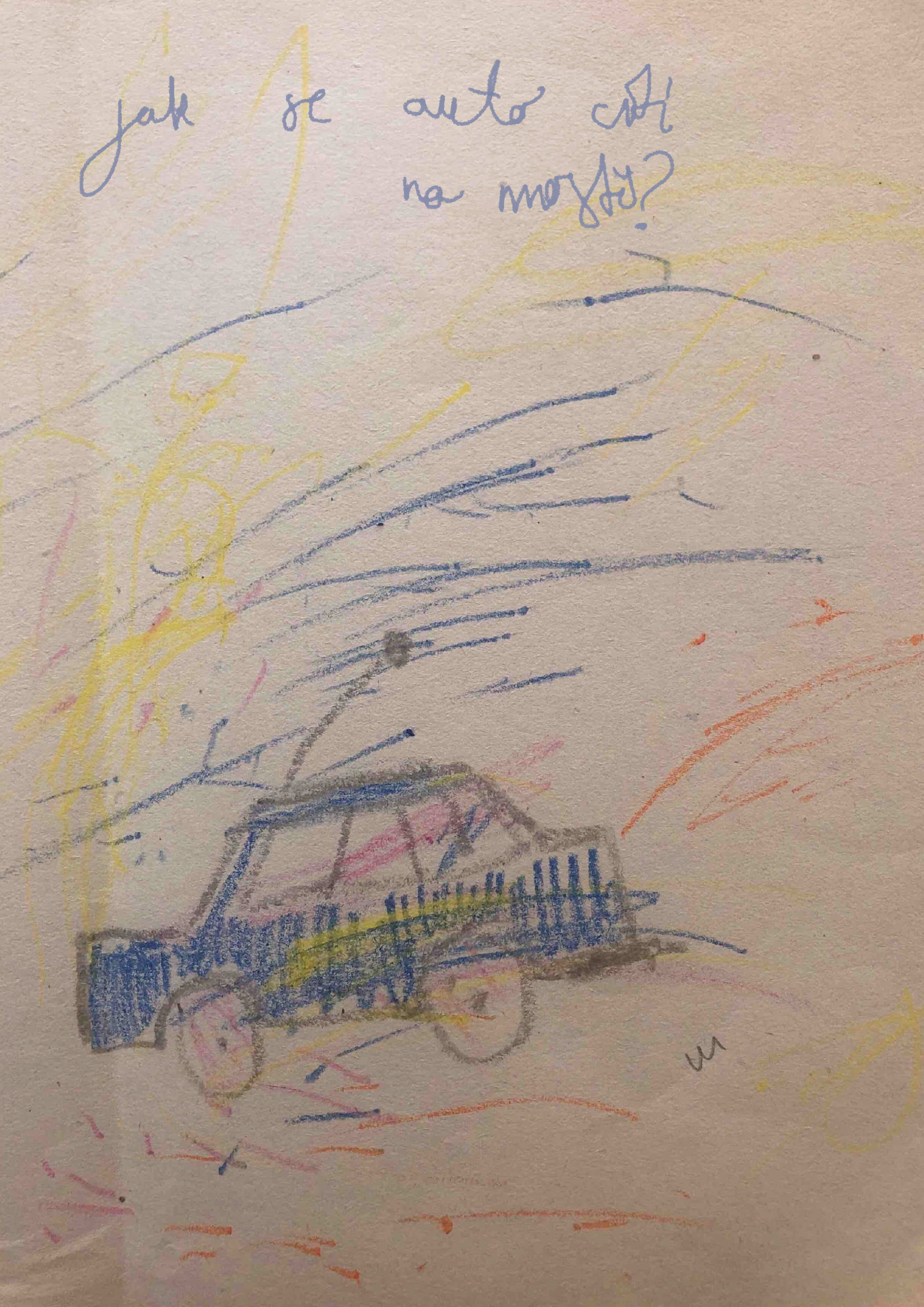year: 2025
place: Prague
concept and intervention: Savka Marenić
photos: Nika Datiashvili
sound design: Jonáš Balcar
collaboration: UMPRUM
Lectors: Adina Voldrábová, Aneta Bočková, Tereza Melková, Milena Raičević, Jasmína Lustigová, Savka Marenić
What if a neglected public space became a place of listening, imagination, and care? What happens when a parking lot turn into a public space for dreaming — a square of dreams?
For one day, a parking lot hidden under Nusle Bridge, at the corner of Oldřichova and Svatoplukova streets, was transformed into a public space for collective dreaming and listening. The textile installation, together with an audio story and sound,invited passersby and inhabitants to slow down, lie down, and listen — to the space, to themselves, and to the subtle voices of what usually remains unheard.
Listening became a way of care, a way of noticing what these neglected and “weird” places can offer when we pause long enough to hear them.
After the shared dreaming, participants continued through creative tasks: small performances, sewing sessions, and writing letters to the Cloak in their collective diary. Together we imagined how this particular space could be transformed through our own needs, wishes, and gestures of care.
This participatory, performative installation is part of an ongoing artistic research project exploring how fiction, imagination, sound, and performative gestures can help reimagine and recover urban public spaces, while strengthening their communal potential. It follows the project Whisper in the Valley, an interactive audio walk that used the fiction of the magical Cloak to uncover hidden stories of the Nusle Valley — a collective walk with performers, followed by an audio story and field recordings.
The installation is also part of the development of an upcoming book, The Cloak, a speculative fiction work that blends collective imagination, performative events, narrative, and ecological awareness. Through personal, collective, and more-than-human perspectives, the Cloak invites readers, participants, and residents into a sensory engagement with overlooked and vulnerable spaces in the Nusle Valley. It demonstrates how small gestures, imagination, and shared creation can transform our perception of these places.
The fairy cloak is just a piece of fabric, without body, name, or gender. Yet it becomes a symbol of connection, care, and exploration, not only with the space itself but also within ourselves. The book embraces a participatory approach, inviting residents to co-create narratives, experience differently these spaces and deepen their connection with the environments and spaces around them.
After the shared dreaming, participants continued through creative tasks: small performances, sewing sessions, and writing letters to the Cloak in their collective diary. Together we imagined how this particular space could be transformed through our own needs, wishes, and gestures of care.
This participatory, performative installation is part of an ongoing artistic research project exploring how fiction, imagination, sound, and performative gestures can help reimagine and recover urban public spaces, while strengthening their communal potential. It follows the project Whisper in the Valley, an interactive audio walk that used the fiction of the magical Cloak to uncover hidden stories of the Nusle Valley — a collective walk with performers, followed by an audio story and field recordings.
The installation is also part of the development of an upcoming book, The Cloak, a speculative fiction work that blends collective imagination, performative events, narrative, and ecological awareness. Through personal, collective, and more-than-human perspectives, the Cloak invites readers, participants, and residents into a sensory engagement with overlooked and vulnerable spaces in the Nusle Valley. It demonstrates how small gestures, imagination, and shared creation can transform our perception of these places.
The fairy cloak is just a piece of fabric, without body, name, or gender. Yet it becomes a symbol of connection, care, and exploration, not only with the space itself but also within ourselves. The book embraces a participatory approach, inviting residents to co-create narratives, experience differently these spaces and deepen their connection with the environments and spaces around them.
